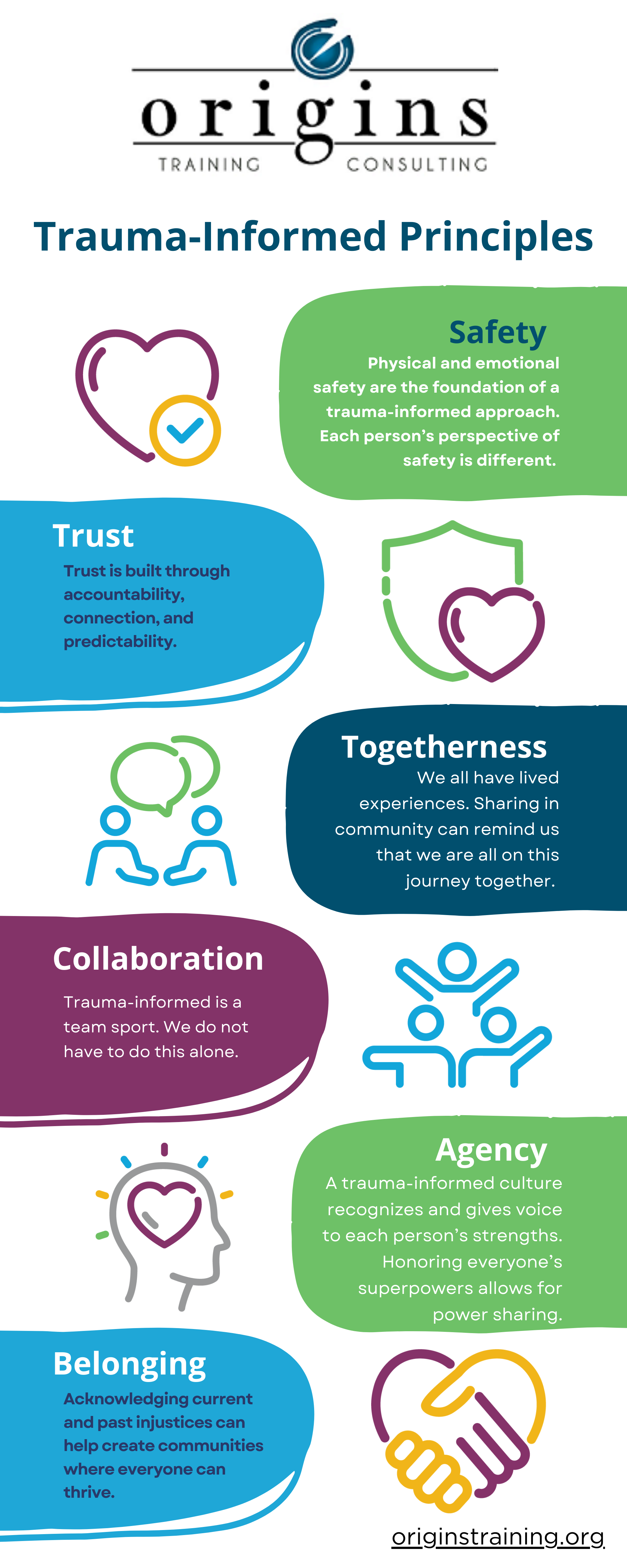/
One of the biggest questions that Andi and I get whenever we talk about a trauma-informed approach is something along the lines of “Ok I get ACEs and toxic stress, but what can I do about it in my organization?” We get it–this approach can seem overwhelming because it is literally a lens through which you see everything. We often say that a trauma-informed approach is less about what you do and more about how you do it. So how in the world do we even begin the work of operationalizing our understanding of the science behind stress, trauma, and resilience?
Many of us who swim in the trauma-informed movement are very familiar with the trauma-informed principles developed by The Substance Abuse and Mental Health Services Administration (SAMHSA). These principles serve as a mechanism for translating the key concepts of this approach into meaningful action. Working with organizations over the years, we have found that the most effective way to put the “rubber to the road” so to speak is to focus on simplification and accessibility–because our brains like simple! With that in mind, we have recently come up with our own version of the principles with the hope that they are a helpful resource as you apply this approach in your setting. 
And remember, you don’t have to do this work alone! We will continue to offer you ways to connect with others who are putting this information into practice. We will also be providing new innovative resources and ways to apply these principles in your organization or community through our training workshops (sign up for The Basics here and The Resilience Champion here).
If you are interested in learning more about how to apply these principles within your organization, Trauma-Informed Tips series offers practical tips for implementing a trauma-informed approach. Using trauma-informed principles as a framework (safety, trust, togetherness, collaboration, agency & belonging) each one-hour workshop in this series focuses on one principle and offers three practical tips to support the application of that principle. Contact us for more information.






